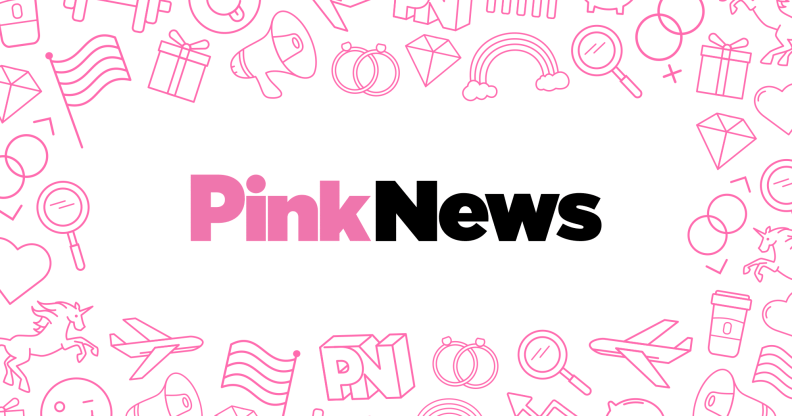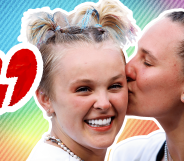Comment: Jamaica’s first LGBT Pride shows how far the country has come

Writing for PinkNews, David Lowis shares his experiences of last week’s Jamaican Gay Pride celebrations and how the tide is changing for the country’s LGBT community.
Emancipation Park in Kingston, Jamaica, August 1. A crowd of around 40 LGBT people, activists and allies has gathered, still on a high from the Pride pre-launch party the night before, to kick Jamaica’s first ever Pride Week off with a flash-mob.
Rainbow flags waving to the tune of loud music drumming out of speakers, dancing and singing. Emotions are flying high at the event staged by LGBT activists in Kingston for the first Jamaican Pride celebrations. After some 15 minutes of partying on the street, everyone hops back into the buses they came with, though not without sticking their rainbow flags out the window and loudly singing along to Katy Perry’s ‘I Kissed a Girl’ on repeat. One of the participants sums everyone’s feelings up by yelling: “We just made history!”, as everyone else in the bus was clapping and chanting along.
This is not the Jamaica that TIME magazine called the “Most Homophobic Place on Earth” in 2006, and the Jamaica that I – as a student from the UK – expected to see when I decided to take an internship opportunity at JFLAG (The Jamaica Forum of Lesbians, All-Sexuals and Gays) in Jamaica. The consensus among everyone participating in the events staged during Pride week was that “maybe, things are turning around.”
Pride week was strategically placed on the days from Emancipation Day on August 1 – celebrating the abolition of slavery in the British Empire – to Independence Day on August 6, celebrating Jamaican independence. This week is a time of festivities for many Jamaicans, and, as an LGBT+ speaker at one of the Pride events noted, “it is finally time for us to join in”. For a week, JFLAG staged several events, including the flashmob (in place of a parade), an open-mic night, an art exhibition, a symposium, and an open-air party. The events highlighted various aspects of LGBT+ experiences in Jamaica whilst giving a common voice to those belonging to a largely marginalised community.
Admittedly, although the tides seem to be turning in Jamaica, the narratives of different speakers and participants at the events varied widely. Some told stories about how their parents had already been accepting of their sexuality even before they ever questioned it themselves, while others were forced to move out of their parental homes when their families found out about their sexual orientation or gender identity.
Many persons who share stories of being displaced spoke about their families’ strong religious beliefs, a fear of shame, and often a lack of understanding of what being LGBT+ entails, as the drivers of the hostility and lack of compassion towards them.
While international media portray physical abuse to be the norm in Jamaica, this is not the case. Street-harassment, however, is more common – especially for those persons whose gender expression/presentation does not align with those prescribed by society. Having been called a “batty boy”, a “fish”, or a “sodomite” by someone from across the street is an common experience among most of the people who attended the events and shared their stories of what it means for them to be an LGBT+ identified person in Jamaica.
This first ever Pride week in Jamaican history, however, was largely a celebration of how far the country had come for such an event to take place. Justice Minister Mark Golding urging Jamaicans to remain respectful towards LGBT+ identified Jamaicans throughout the Pride celebrations, and Kingston’s Mayor Dr Angela Brown-Burke delivering a sincere speech at the Pride Opening ceremony expressing her support of the LGBT+ rights movement, were signs of the changing times which moved many of the events’ participants. As Dr Brown-Burke said in her speech, “the time is now”.
Over the course of the past few years, JFLAG has worked together with the people of the community, as well as national and international bodies, in order to increase LGBT+ visibility and to improve life for LGBT+ identified people in a country where the topic of sexuality is often at best taboo, at worst the cause of loud arguments and hostility.
Visibility of the community matters especially given the constant misrepresentation in Jamaican media, which often paints a picture of the LGBT+ community as violent and amoral, an image which has been pervasive in Jamaican society and has been the cause of concern for many of the members of the community. This image has also been perpetuated by international news outlets choosing to solely highlight the experiences of a small group of homeless gay men and trans women in Kingston, also known as “Gully Queens”, at the expense of portraying the variety of LGBT+ experiences and stories in Jamaica.
The events at Pride therefore served, in a way, not only the coming together of the community itself – they also served the purpose of showing the world a different side of the community, a side marked by diversity and an appetite for change.
Creating spaces for LGBT+ people is a large part of JFLAG’s work, and while the spaces in existence are still somewhat limited and not always accessible, and the stakes of failing to navigate them may be high, events like the Flashmob or the End of Pride Party showed a small glimpse of a Jamaican future in which the different people of the community will be able to come together and celebrate openly and loudly. Having come to Jamaica expecting the worst, this first ever Pride Week struck me as an amazing opportunity for this country and its LGBT+ people. Now the week has ended, the task is to use the enthusiasm and spirit which have been garnered, in order to help effect lasting changes for all members of the community.

